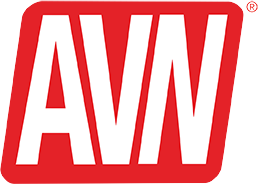BellSouth's 5.2 million miles of fiber-optic cables just might pay off big after all: The company says it’s ready to deliver Internet Protocol Television (IPTV) to consumers well ahead of many competitors. Trials could begin later in this year.
New Destiny/Homegrown Video chief Spike Goldberg approves. "Anyplace that you can get to the consumers, if it catches on in a broad scale, it can't go wrong," Goldberg tells AVNOnline.com about the likely advent of IPTV. "I would say it's a great new opportunity opening up. BellSouth is starting toward the trials; it sounds exciting."
A decade ago,BellSouth took a heavy risk when it plowed ahead with laying fiber-optic lines while their competitors among the local telephone carriers waited for regulatory issues to be resolved. The risk, according to published reports, was that regulators could have forced the companies to share such networks.
Some analysts believe that getting IPTV to the home may be key to telecom survival in the coming years, especially with local phone customers switching to cell phones and Internet telephony.
"BellSouth is in a very good position," said Buckingham analyst Qaisar Hasan to reporters. "The fact that they've been deploying fiber for several years – and their choice of technology – could make them winners."
In other words, BellSouth stands to profit handsomely from that early risk—the company already serves over a million homes with fiber-optic technology and is all but ready to deliver IPTV, while the hesitant competitors aren't quite there just yet.
The company plans to launch a preliminary trial later this year, according to vice president for broadband services Michael Bowling.
IPTV reportedly garnered a lot of attention at the Supercomm telecommunications trade show in Chicago this week, with many reported as saying that getting into it would be a logical way to counter cable television providers invading local telephony. The same show goers were also said to have expressed the opinion that IPTV will depend on two key factors: its technological soundness and the regulatory environment.
BellSouth is said to have committed to Asynchronous Digital Subscriber Line technologies that allow 12mbps capacity on single-copper strands, bumping it to 24mbps by way of the bonding technique of using two copper strands. The company is also said to be considering very-high-bit-rate DSL (VDSL)—capable of speeds as fast as 100mbps.
Hasan was quoted as saying getting the speed between 20-25 mbps would be the magic number for BellSouth. "If BellSouth can't get bonding to deliver these data rates," he said, "they won't be able to compete as effectively."
Bell South chief executive Duane Ackerman said at the Supercomm gathering that the company never stays out of the competitive picture.
"We are currently evaluating all these different technologies," he said, after giving the gathering's keynote address. "And then we'll decide what to do."









